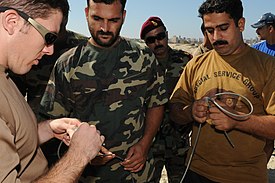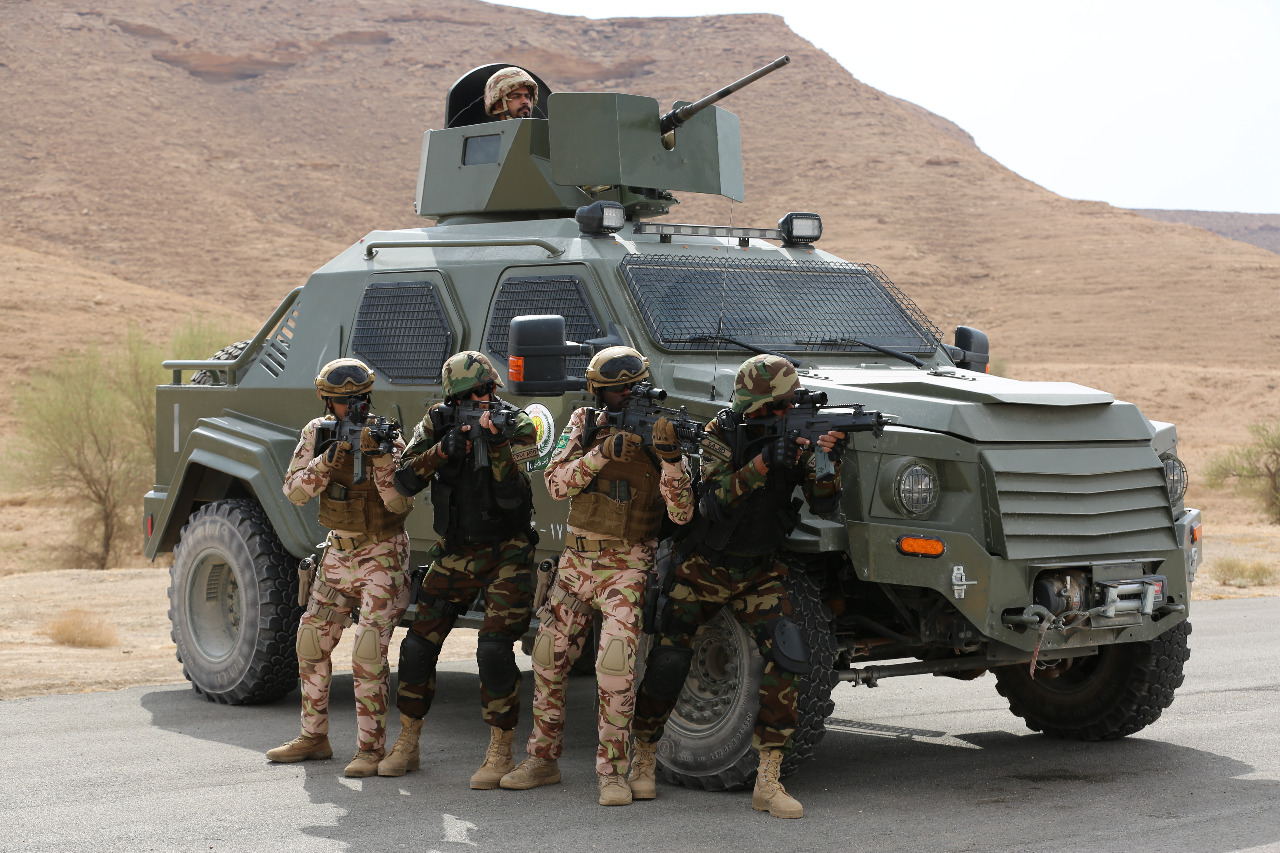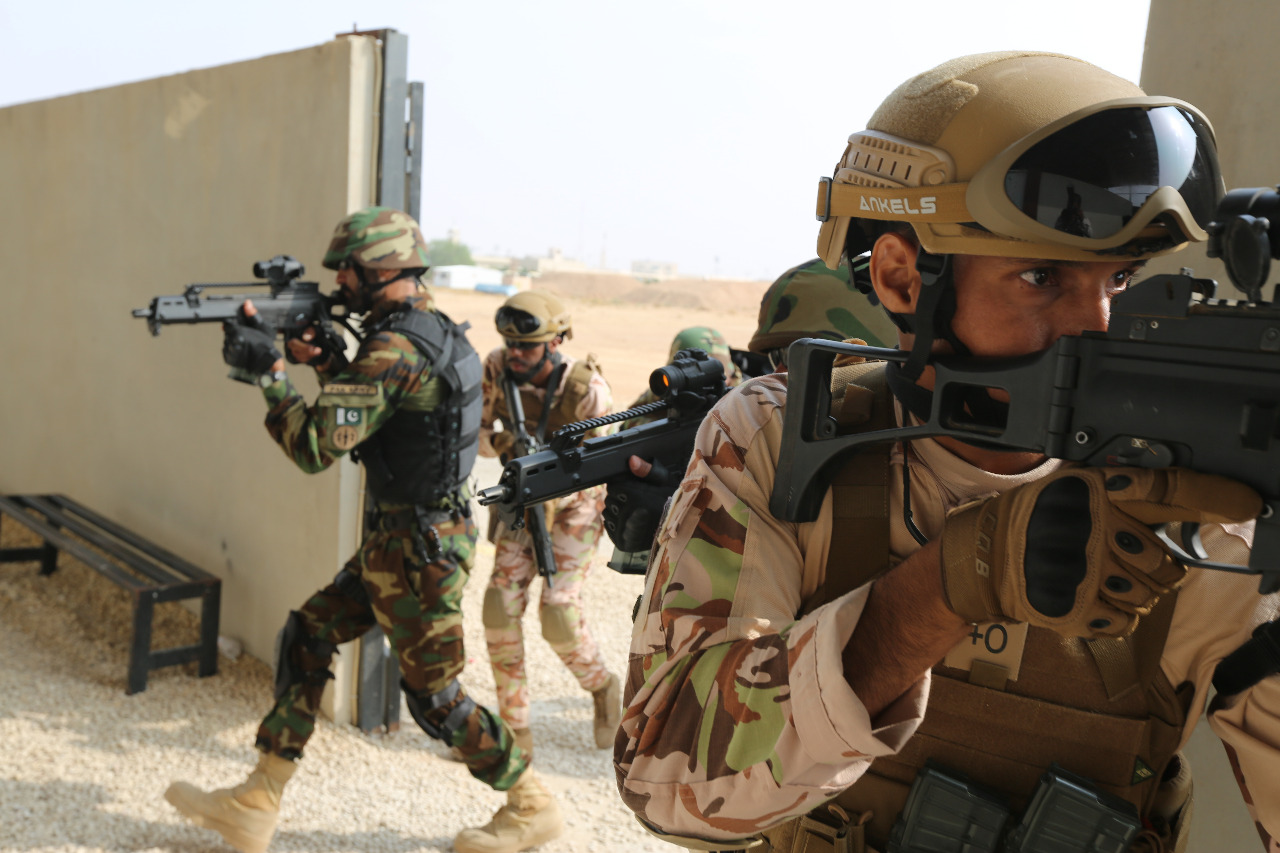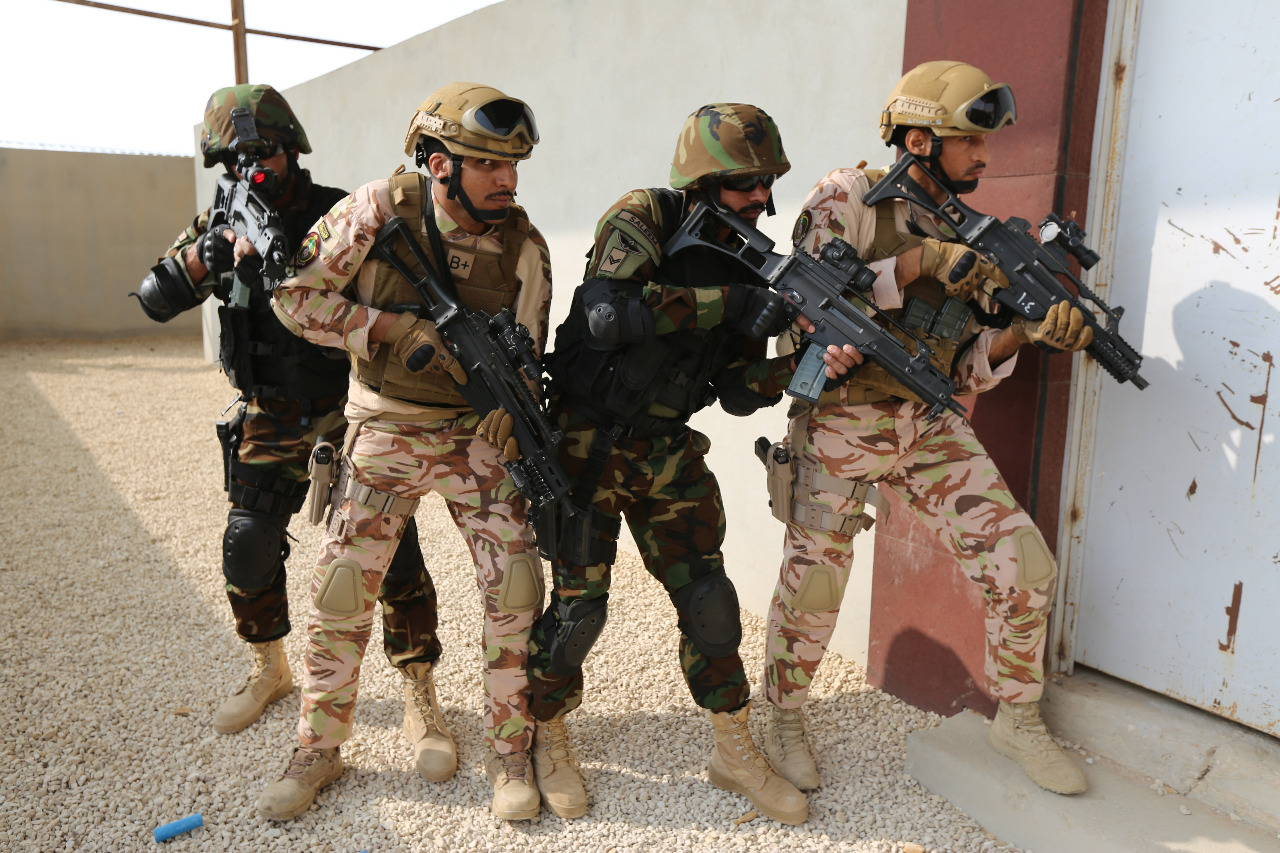ghazi52
Think Tank Analyst
- Mar 21, 2007
- 114,166
- 165,222
- Country of Origin

- Country of Residence

SSG
In 1953-54 the Pakistan Army raised an elite commando formation with US Army assistance. To disguise its true mission the new unit was simply designated 10 Bn. of The Baluch Regiment The battalion was posted to a new headquarters at Cherat near Attock City. In march 1964 a Mobile Training Team from the US Army Special Forces Group (Airborne) went to Pakistan to set up a new airborne school at Peshawar for 19 Baluch. The school included basic and jumpmaster courses. All members of 19 Baluch were airborne-qualified. The training team also included four riggers, who helped train Pakistani counterparts.
By this time 19 Baluch was already considered the SSG (Special Services Group) which was divided into 24 companies. Each company had specialization units, specialized in desert, mountain, ranger, and underwater warfare. The desert companies participated in training exercises with US Army Special Forces Mobile Training Team in late 1964. The scuba company in Karachi was renowned for its tough physical training.
In 1970 an anti-terrorist role was added. This mission was given to the Musa Company, an independent formation within SSG. The name was given after the name of Prophet Musa (Moses). The company was originally formed in 1970 as a combat diver unit. In 1980 however each company was given a diver unit. After the Musa company was converted to an anti-terrorist unit, it received training by British SAS advisors in Cherat during mid-1981.
In 1986 SSG began a large-scale basic training program for Sri Lankan Paramilitary militia forces. Commando and airborne training was given to members of the Sri Lankan Commando Regiment.
SSG units have also been seconded in covert operations in Afghanistan during the Afghan war, as air marshals on passenger airlines and as VIP security. At present, the SSG maintains its headquarters at Cherat and runs the Airborne School at Peshawar. Two SSG battalions are normally rotated through Cherat with a third battalion divided between the border and other strategic locations such as the Terbella Dam and nuclear research facilities. Each SSG battalion numbers 700 men in four companies. Each company is split into platoons and further sub-divided into 10 men teams. Battalions are commanded by Lieutenant Colonels, the group is currently run by a Colonel
Training
SSG officers must have at least two years of prior military experience and volunteer from other formations for three-year assignments with the SSG; NCO and enlisted men volunteer from other formations to serve permanently in the SSG. All trainees must participate in an eight-month SSG course at Cherta. The SSG course course emphasizes tough physical conditioning. Included is a 36-mile march in 12 hours, a grueling requirement that was first institutionalized by 19 Baluch. They are also required to run 5 miles in 40 minutes with full gear. Following the SSG course, trainees must volunteer for Airborne School. The course last four weeks, with wings awarded after seven (five day, two night) jumps. none SSG airborne students only have to complete a the five day jump.
Many in the SSG school are selected for additional specialist training. A HALO course is given at Peshawar with a 'skydiver' tab awarded after 5 freefall jumps. A "Mountain Warfare" qualification badge is given after completing a course at the Mountain Warfare School in Abbotsbsd; and a "Combat Diver" badge is awarded awarded for the course held by the Naval Special Services Group SSGN at Karachi. three classes of combat swimmers were recognized: 1st class to those completing an 18-mile swim; 2nd class to those finishing a 12-mile swim; and 3rd class for a 6-mile swim. SSG regularly sends students to the US for special warfare and airborne training. later on due to Siachen crisis, a Snow and High Altitude Warfare School was also established.
SSG Weapons and Uniforms
While they were designated 19 Baluch, the Pakistani special forces were distinguished by a green beret with the Baluch Regt. beret insignia on a maroon flash. A 'Baluch' tab, black with a maroon background, went on left shoulder. Combat uniforms were Khaki. The SSG dropped the green beret in favor of a maroon beret.
A silver metal SSG beret is worn in a light blue felt square. A bullion SSG para wing with a black cloth background is worn on the left chest. A red cloth version is worn by master parachutist who has at least 50 jumps. SSG "Riggers" wear a wing with the English word 'Rigger' stitched across the wing. A distinctive SSG badge featuring a dagger framed by lightening bolts, used since 1964 by members of 19 Baluch goes on the left shoulder; qualification tabs and badges such as Skydiver, SCUBA, or Mountain Warfare go on the right shoulder. A silver metal SSG insignia is occasionally worn on shoulder straps.
In 1953-54 the Pakistan Army raised an elite commando formation with US Army assistance. To disguise its true mission the new unit was simply designated 10 Bn. of The Baluch Regiment The battalion was posted to a new headquarters at Cherat near Attock City. In march 1964 a Mobile Training Team from the US Army Special Forces Group (Airborne) went to Pakistan to set up a new airborne school at Peshawar for 19 Baluch. The school included basic and jumpmaster courses. All members of 19 Baluch were airborne-qualified. The training team also included four riggers, who helped train Pakistani counterparts.
By this time 19 Baluch was already considered the SSG (Special Services Group) which was divided into 24 companies. Each company had specialization units, specialized in desert, mountain, ranger, and underwater warfare. The desert companies participated in training exercises with US Army Special Forces Mobile Training Team in late 1964. The scuba company in Karachi was renowned for its tough physical training.
In 1970 an anti-terrorist role was added. This mission was given to the Musa Company, an independent formation within SSG. The name was given after the name of Prophet Musa (Moses). The company was originally formed in 1970 as a combat diver unit. In 1980 however each company was given a diver unit. After the Musa company was converted to an anti-terrorist unit, it received training by British SAS advisors in Cherat during mid-1981.
In 1986 SSG began a large-scale basic training program for Sri Lankan Paramilitary militia forces. Commando and airborne training was given to members of the Sri Lankan Commando Regiment.
SSG units have also been seconded in covert operations in Afghanistan during the Afghan war, as air marshals on passenger airlines and as VIP security. At present, the SSG maintains its headquarters at Cherat and runs the Airborne School at Peshawar. Two SSG battalions are normally rotated through Cherat with a third battalion divided between the border and other strategic locations such as the Terbella Dam and nuclear research facilities. Each SSG battalion numbers 700 men in four companies. Each company is split into platoons and further sub-divided into 10 men teams. Battalions are commanded by Lieutenant Colonels, the group is currently run by a Colonel
Training
SSG officers must have at least two years of prior military experience and volunteer from other formations for three-year assignments with the SSG; NCO and enlisted men volunteer from other formations to serve permanently in the SSG. All trainees must participate in an eight-month SSG course at Cherta. The SSG course course emphasizes tough physical conditioning. Included is a 36-mile march in 12 hours, a grueling requirement that was first institutionalized by 19 Baluch. They are also required to run 5 miles in 40 minutes with full gear. Following the SSG course, trainees must volunteer for Airborne School. The course last four weeks, with wings awarded after seven (five day, two night) jumps. none SSG airborne students only have to complete a the five day jump.
Many in the SSG school are selected for additional specialist training. A HALO course is given at Peshawar with a 'skydiver' tab awarded after 5 freefall jumps. A "Mountain Warfare" qualification badge is given after completing a course at the Mountain Warfare School in Abbotsbsd; and a "Combat Diver" badge is awarded awarded for the course held by the Naval Special Services Group SSGN at Karachi. three classes of combat swimmers were recognized: 1st class to those completing an 18-mile swim; 2nd class to those finishing a 12-mile swim; and 3rd class for a 6-mile swim. SSG regularly sends students to the US for special warfare and airborne training. later on due to Siachen crisis, a Snow and High Altitude Warfare School was also established.
SSG Weapons and Uniforms
While they were designated 19 Baluch, the Pakistani special forces were distinguished by a green beret with the Baluch Regt. beret insignia on a maroon flash. A 'Baluch' tab, black with a maroon background, went on left shoulder. Combat uniforms were Khaki. The SSG dropped the green beret in favor of a maroon beret.
A silver metal SSG beret is worn in a light blue felt square. A bullion SSG para wing with a black cloth background is worn on the left chest. A red cloth version is worn by master parachutist who has at least 50 jumps. SSG "Riggers" wear a wing with the English word 'Rigger' stitched across the wing. A distinctive SSG badge featuring a dagger framed by lightening bolts, used since 1964 by members of 19 Baluch goes on the left shoulder; qualification tabs and badges such as Skydiver, SCUBA, or Mountain Warfare go on the right shoulder. A silver metal SSG insignia is occasionally worn on shoulder straps.
Last edited:


















